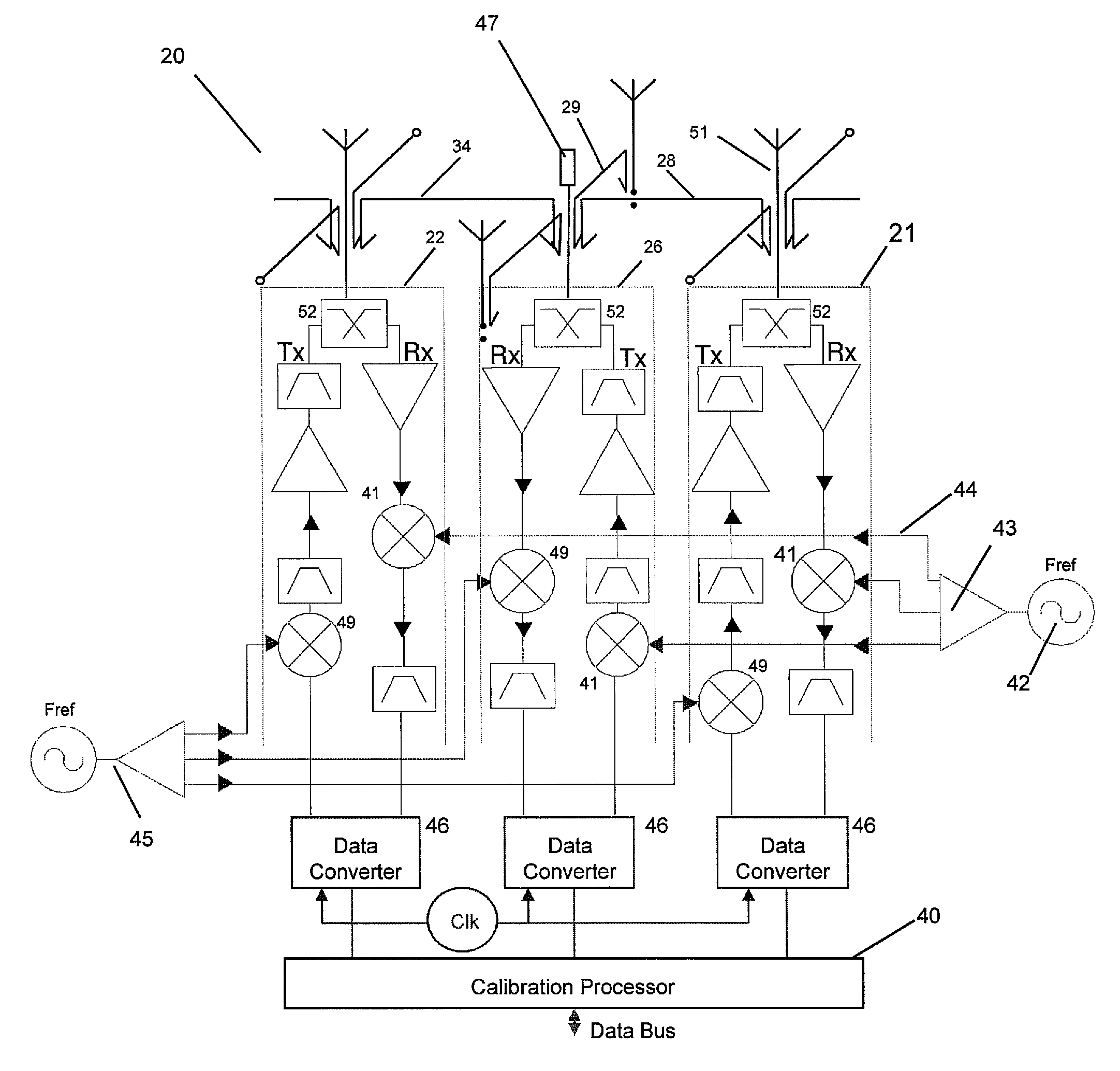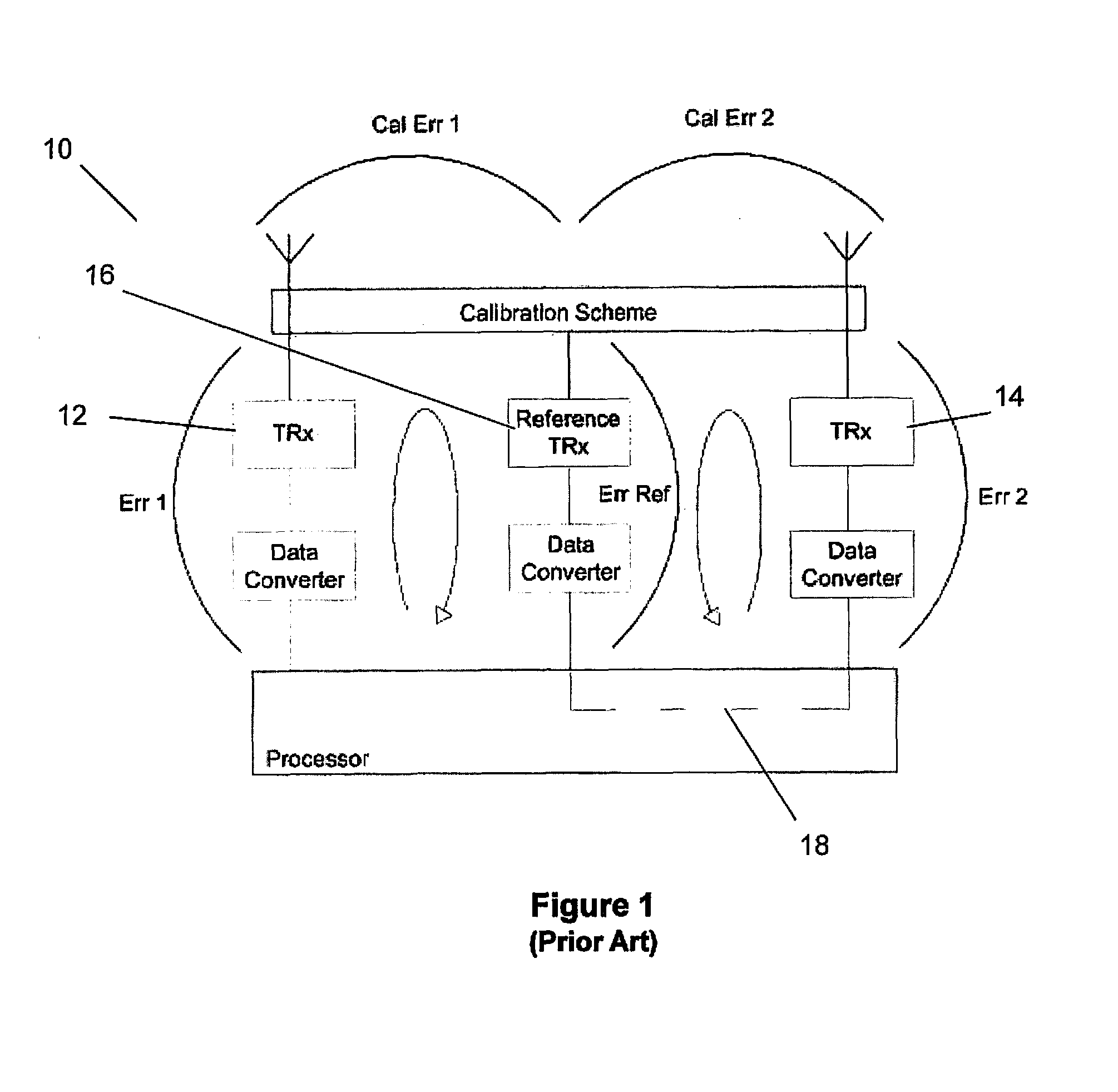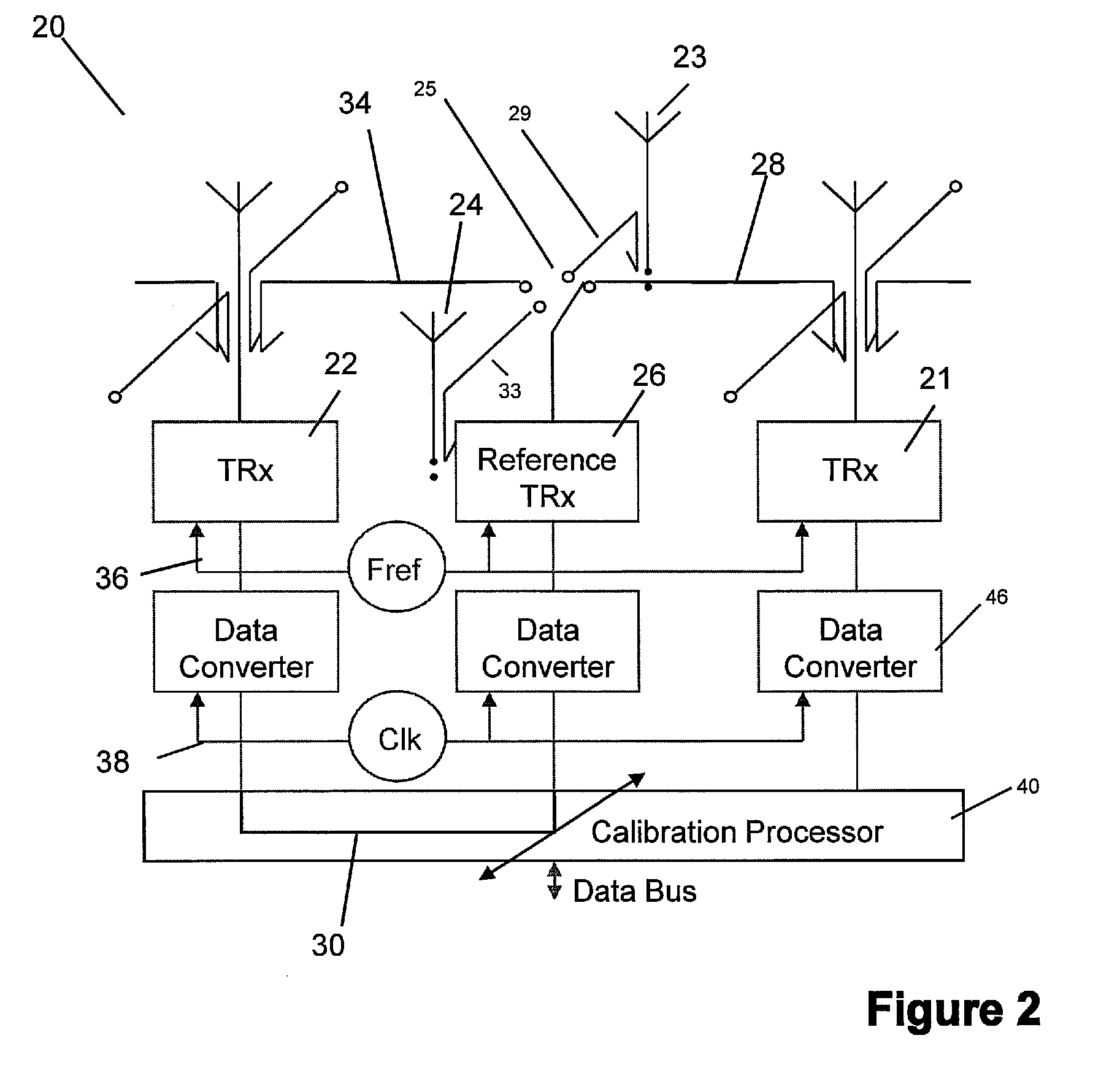Antenna array calibration
a technology for antenna arrays and antenna arrays, applied in wave based measurement systems, instruments, electrical equipment, etc., can solve the problems of complex transceiver hardware in a full duplex communication system, and the inability to use large antenna arrays, so as to achieve easy replication and increase spectral efficiency
- Summary
- Abstract
- Description
- Claims
- Application Information
AI Technical Summary
Benefits of technology
Problems solved by technology
Method used
Image
Examples
Embodiment Construction
[0028]Referring now to FIG. 2, there is depicted a portion 20 of an antenna array according to an embodiment of the present invention.
[0029]This portion 20 comprises first and second transceivers and their antenna 21 and 22 and the antennae for third and fourth transceivers 23 and 24, respectively, as well as a dedicated non-radiative reference transceiver 26.
[0030]In the preferred embodiment, a coupled electromagnetic calibration path 28 is provided between the first transceiver 21 and the reference transceiver 26. Similarly, a coupled electromagnetic calibration path 34 is provided between the second transceiver 22 and the reference transceiver 26.
[0031]In addition, a feedback path 30, is provided between the second, third and fourth transceivers 22, 23 and 24 and the reference transceiver 26. To ensure all of the elements of the array are frequency coherent, a single signal generator signal (Fref) is distributed through a network 36 between all of the array transceivers. This sig...
PUM
 Login to View More
Login to View More Abstract
Description
Claims
Application Information
 Login to View More
Login to View More - R&D
- Intellectual Property
- Life Sciences
- Materials
- Tech Scout
- Unparalleled Data Quality
- Higher Quality Content
- 60% Fewer Hallucinations
Browse by: Latest US Patents, China's latest patents, Technical Efficacy Thesaurus, Application Domain, Technology Topic, Popular Technical Reports.
© 2025 PatSnap. All rights reserved.Legal|Privacy policy|Modern Slavery Act Transparency Statement|Sitemap|About US| Contact US: help@patsnap.com



